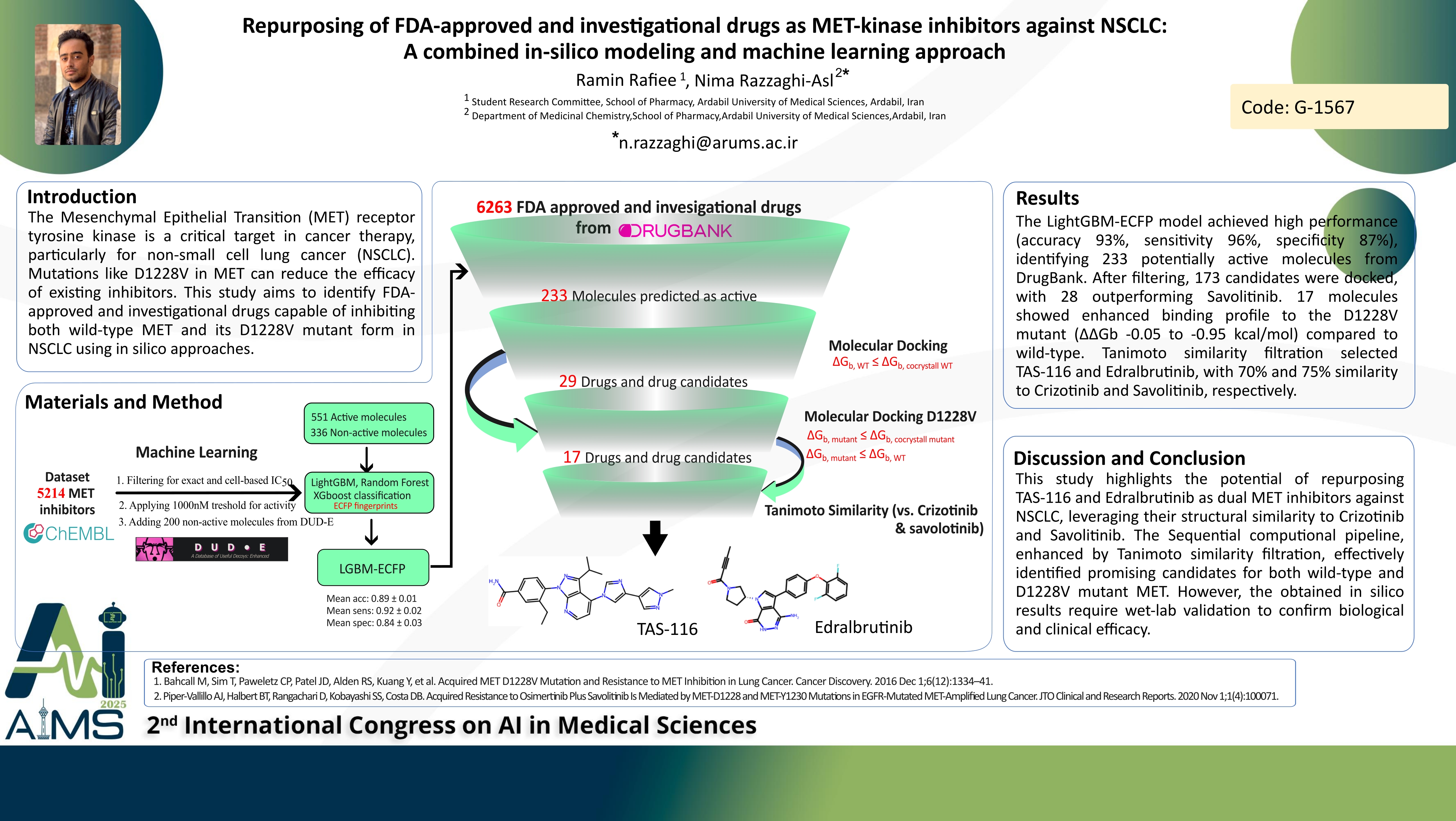Repurposing of FDA-approved and investigational drugs as MET-kinase inhibitors against NSCLC: A combined in-silico modeling and machine learning approach
Code: G-1567
Authors: Ramin Rafiee ℗, Nima Razzaghi Asl *
Schedule: Not Scheduled!
Tag: Drug Discovery
Download: Download Poster
Abstract:
Abstract
Background and aims: The Mesenchymal Epithelial Transition (MET) receptor tyrosine kinase plays a pivotal role in cancer therapy. However, mutations such as D1228V can diminish the effectiveness of current inhibitors. In continuation to our interest for in silico assessment of oncotargets, this study sought to identify FDA-approved and investigational drugs that are likely capable of inhibiting both wild-type MET and its D1228V mutant form against non-small cell lung cancer (NSCLC). Method: A dataset comprising 639 tyrosine kinase inhibitors with NSCLC-related cell growth inhibitory effects (IC50s) from ChEMBL (https://www.ebi.ac.uk/chembl/) was curated, applying a 103 nM bioactivity threshold as a cut-off point and balanced with DUD-E decoy molecules. Several machine learning models including LightGBM, XGBoost, and Random Forest, were utilized along with different molecular fingerprints. According to the obtained results, LightGBM with extended connectivity fingerprint (ECFP) emerged as the most effective model with satisfying metrics (accuracy 0.93, sensitivity 0.96, and specifity 0.87). The top-ranked model screened 6263 molecules from DrugBank, identifying 233 as potentially active. Subsequent drug-likeness filtering (Lipinski rule of 5 and rotatable bonds 10), conferred 173 candidates that were docked into the catalytic site of wild-type MET receptor. Of these, 28 outperformed the reference co-crystal inhibitor Savolitinib and were subjected to molecular docking to the D1228V mutant. Results: Seventeen molecules demonstrated enhanced binding profile to the D1228V mutant catalytic site, with enhanced free binding energies (ΔΔGbs -0.05 to -0.95 kcal/mol) with regard to the wild-type energies. Key examples included SAR-125844 (ΔΔGb -0.38 kcal/mol) and Edralbrutinib (ΔΔGb -0.95 kcal/mol). Conclusion: This study underscores the repurposing potential of dual MET inhibitors, such as SAR-125844 and Palbociclib against NSCLC. The outputs of the current study suggests opportunities for drug repurposing in cancer treatment. Although results of this computational study provided a few promising molecules as a promising MET inhibitors, robust wet-lab experiments seem necessary to achieve desirable biological and clinical effects.
Keywords
NSCLC, MET Kinase, Drug Repurposing, Machine
